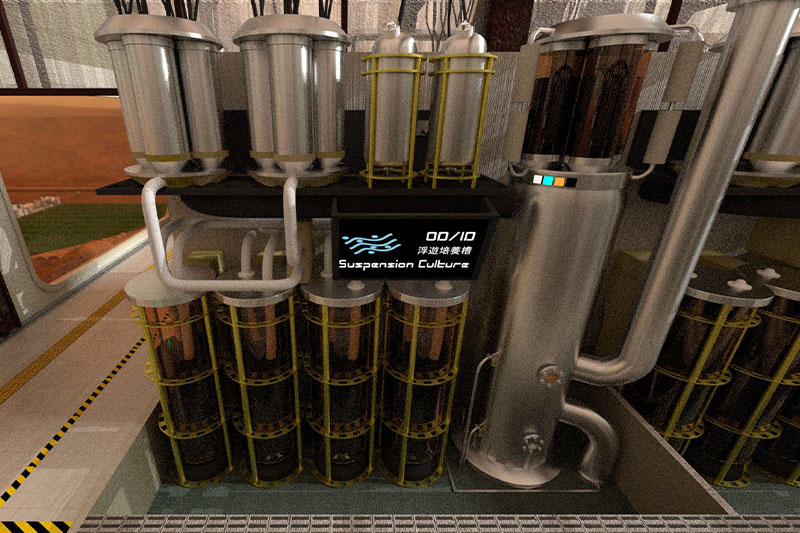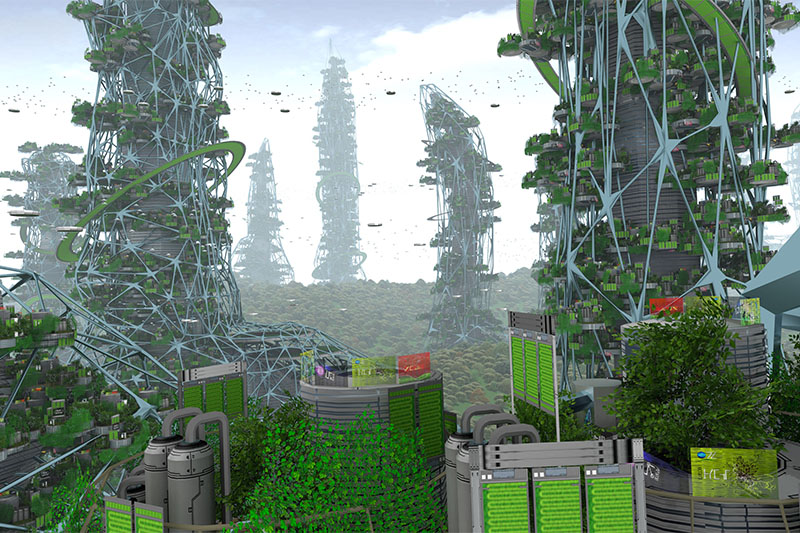A firm believer that science should be accessible, research scientist Yuki Hanyu founded Shojinmeat Project, a non-profit community movement that aims to develop cellular meat that can be created at home.
Driven by his love for sci-fi manga and anime, Yuki Hanyu has always harboured a passion for science, having completed his PhD on nanofabrication at Oxford University in 2010 and worked as a research scientist for Toshiba Corporation’s Systems Engineering Laboratory until 2014.
However, in 2014, Yuki sought to venture beyond academia to make a more tangible impact, founding Shojinmeat Project, a nonprofit initiative to make cultured meat processes accessible to the masses. Taking a novel bottom-up approach, the project aims to demystify the intricacies of cell-based meat, teaching its members to cultivate DIY cellular meat at home without bio-laboratories or complex scientific equipment.
The movement has since garnered a huge citizen-led community, leading Yuki to found IntegriCulture Inc. in 2015, a Tokyo-based commercial food tech firm focused on scaling up the production of cell-based meat. The company has ambitious plans to launch cell-cultured foie gras by December next year.
Here, we speak with Yuki, delving into his unique approach to cellular meat and why he believes it is so important to establish transparency about the industry within the community.

In layman terms, can you explain to us what cultured meat is?
It’s essentially meat made from cells taken from live animals. You then multiply them in a bioreactor using a culture medium, then you can process it and it becomes meat!
Why is cultured meat important? Why can’t it be substituted with other protein sources?
The production of meat is very resource-intensive. We’ve seen large-scale deforestation, water shortages, and even public health hazards just to get all the resources needed to produce meat. On top of that, we’re seeing a growing problem of ageing populations, while formerly poor countries are becoming rich and eating a lot more meat. This growing demand for protein just can’t be supplied with the limited resources available. This means we need to expand the different kinds of proteins available in the market, like plant-based meat, algae, insects, as well as biosynthetic and cell-based meat as alternative meat-based protein sources. This will also cut down on energy, land, and water use as well as greenhouse gas emissions.
Of course, a very simple solution would just be for everyone to become vegan, but this is not very realistic. The next option is for vegans to stay vegans while meat-eaters eat plant-based meat, but then this plant-based meat can only replicate things like sausages and burgers. People would still have to give up on steak and other flavours and textures that only meat can provide, so cultured meat is able to fill that gap.
How does the Shojinmeat Project work as a citizen-led initiative?
It’s a hobby club, so everyone can join the community if they’re interested in the subject, whether you’re a professional, science enthusiast, student, or a primary school kid. People can basically do whatever they want with DIY experiments at home to try and cultivate meat. Actually, if you don’t mind about the quality and quantity, you can already make cultured meat at home using Shojinmeat project methods!
Other than that, some do non-science stuff like drawing manga, writing stories or even doing cosplay to act out and picture what the world would look like with cultured meat, and we help these artists and writers to do that with our scientific knowledge.

Why did you choose to adopt this bottom-up approach?
The role of art is very important for getting people involved in complicated, scientific concepts. There’s a very popular anime series in Japan called Sword Art Online that talks a lot about VR technology – if you ask any middle school or high school students in Japan about VR and AI, they will think of Sword Art Online. The same goes on for cultured meat – it’s a new, scientific concept that people are just not familiar with or interested in. By engaging with people and drawing connections to how cellular agriculture could affect daily life in the future through art, this makes for a two-way exchange of initiatives between the people producing cell-cultured meat and the wider public, educating the wider society about what this technology is.
If we look at genetically modified organisms (GMO), they were also initially introduced as a green technology that produces nutritionally-enhanced, flood- and pest-resistant crops and solves world hunger. What ended up happening was the creation of Monsanto herbicide-resistant crops that are only produced for the profit of very few players. This closed process of corporate monopoly inevitably caused high levels of suspicion and turned it into a controversial, political issue.
What we’re doing with the Shojinmeat Project is trying to stay away from that. Instead, we’re building an open process where academic and scientific knowledge goes to the people rather than straight to the business to scale and deliver. This means that citizens and game players such as farmers, butchers, and chefs can get involved with hands-on experience, set the direction, decide on what meat should be like, and make society-wide agreements.
What are the difficulties in producing clean meat?
It’s mainly technological difficulties at the moment. To make the meat more affordable, we need to use an inexpensive medium. This has been presented by the Shojinmeat Project and is now being scaled up and commercialised by IntegriCulture.
Another one is consumer acceptance. Current studies show that one-third of the population is willing to try, one-third say they don’t know, and the rest say they would not try it. However, this is tricky because asking “Would you buy something?” and “Did you actually buy something” are very different. So, we can’t really say anything concrete on this until we have the actual product.

Has the Japanese government been supportive of food tech initiatives?
One of the priorities of the Japanese government is food security because a lot of our food supply currently relies on imports. The coronavirus has amplified this problem with a temporary disruption of supply chains and has given rise to future possibilities of similar events happening. So, given the fact that cultured meat is able to increase self-sufficiency for food, the Japanese government has generally been very supportive.
In fact, the government has made some major investments in IntegriCulture and the Ministry of Agriculture, Forestry and Fisheries recently organised roundtable discussions with stakeholders to try and come up with a consensus on how cellular agriculture and cell-cultured meat should be regulated and who gets to oversee what.
Where do you see the future of the meat industry heading?
From my point of view, people will probably go through some kind of hype crash in the next five years, just because the technology would not really be up to people’s expectations yet.
Once the hype crash happens, we will probably see much fewer mentions of cell-based meat in the media and people will start to forget about it. But, I believe that R&D efforts will still continue and we will start seeing products becoming commercialised, starting from things with a very high unit price like foie gras. After that, more small players and holders will get involved and produce meat as well.
We’re hoping that ultimately, it will come to a point where farmers and restaurants will have their own bioreactors that can design and make new meat.
Related Articles
Omnipork: The Meatless Alternative Perfect for Asia’s Markets?
TurtleTree Labs: The Singaporean Food Tech Startup Engineering Cell-Based Milk
You’ve Had The Meatless Burger. Is It Time To Tuck Into Meatless Fish?





